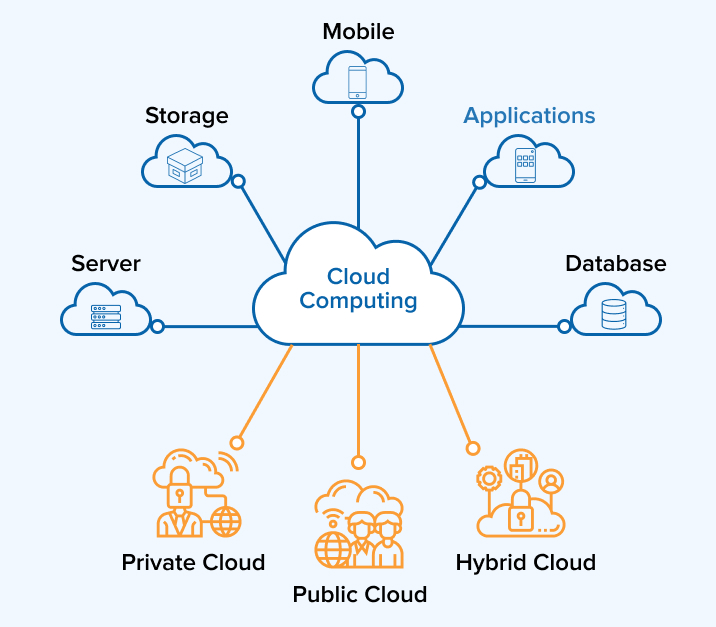Simplify Your Framework With Cloud Solutions
As services navigate the ever-evolving landscape of innovation and information monitoring, the duty of cloud solutions in simplifying infrastructure has actually ended up being increasingly noticeable. How can services properly browse this transition and really unlock the capacity of cloud solutions for streamlining their facilities?
Advantages of Cloud Provider
Cloud services provide a streamlined strategy to handling IT infrastructure, offering businesses with versatility, cost-efficiency, and scalability. One of the key advantages of cloud services is the scalability they use.
In addition, cloud solutions remove the requirement for organizations to spend in costly hardware and software program. This cost-efficiency is a substantial benefit, specifically for small to medium-sized business wanting to lessen upfront costs. By utilizing cloud solutions, companies can access top quality IT resources without the substantial cost related to standard infrastructure configurations.
Furthermore, cloud solutions supply organizations with the flexibility to access their information and applications from anywhere with a web connection. This level of access boosts collaboration among groups, allows remote job, and enhances total performance. The flexibility provided by cloud services equips services to adapt promptly to transforming market conditions and customer demands.
Cost Financial Savings and Scalability
In enhancement to the operational benefits highlighted earlier, the combination of cloud services into a business's facilities generates substantial expense financial savings and boosted scalability. Cloud services provide a pay-as-you-go design, enabling services to scale resources up or down based upon current demands, consequently avoiding the costs linked with preserving excess capability. This adaptability makes it possible for firms to adjust rapidly to rising and fall needs without sustaining unnecessary expenditures.
Additionally, cloud solutions remove the requirement for upfront investments in software and hardware, decreasing capital investment. Operating expenditures are also minimized as business no more need to handle and maintain physical servers, leading to lower power intake and IT staffing prices. In addition, cloud services give automated updates and upkeep, making certain that the framework continues to be secure and up-to-date without needing hand-operated treatments.
Improved Safety And Security Steps
Carrying out strict security actions is critical when incorporating cloud services into a firm's infrastructure to protect sensitive data and make certain conformity with sector laws. Cloud company provide boosted safety functions such as information encryption, firewall software protection, and multi-factor verification to minimize cybersecurity dangers. File encryption assists protect data both at rest and en route, guaranteeing that only licensed individuals can access delicate information. Firewall programs function as an obstacle in between inner networks and external hazards, surveillance and managing inbound and outward bound network website traffic. Multi-factor verification includes an additional layer of safety and security by needing customers to provide numerous kinds of confirmation before accessing the cloud solutions.
In addition, routine protection audits and compliance evaluations aid guarantee and determine susceptabilities adherence to sector requirements. Business can additionally benefit from attributes like automatic safety and security updates and real-time threat surveillance provided by cloud solution carriers. By focusing on safety steps and staying aggressive in attending to possible threats, services can with confidence take advantage of cloud services while protecting their important information from unauthorized gain access to or violations.
Transitioning to Cloud Infrastructure
To efficiently incorporate cloud solutions into a firm's facilities, a structured technique that addresses the shift towards cloud-based services is important. Transitioning to cloud framework includes mindful planning and execution to ensure a smooth movement process. The initial action is to evaluate the present infrastructure and establish which applications and systems appropriate for migration to the cloud. This assessment should consider variables such as data level of sensitivity, compliance requirements, and efficiency demands.
Once the evaluation is total, a movement approach must be developed. This technique needs to detail the timeline, resources, why not check here and duties for relocating each part to the cloud. It is necessary to connect this strategy plainly to all stakeholders to make certain placement and minimize disruptions throughout the shift.
Throughout the movement surveillance, testing and process are crucial to recognize and address any problems immediately. Normal checkpoints must be developed to track progression and make essential changes. Additionally, training for employees on using cloud services need to be given to guarantee a successful change and maximize the benefits of the new facilities.
Best Practices for Cloud Adoption
Successful adoption of cloud services pivots on the calculated alignment of organization goals with technological capacities and organizational readiness. To guarantee a smooth transition to the cloud, organizations must begin by performing an extensive evaluation of their present infrastructure and identifying which work are best fit for cloud movement. It is vital to include key stakeholders from different divisions in the decision-making process to acquire buy-in and resolve any worries early on.
Another finest technique for cloud adoption is to prioritize safety and conformity. Organizations should meticulously evaluate the safety and security procedures offered by cloud company and make certain that their data is safeguarded according to market criteria and governing requirements. Carrying out durable information encryption, access controls, and routine protection audits can aid mitigate dangers connected with cloud fostering.

Final Thought

As services browse the ever-evolving landscape of innovation and information monitoring, the function of cloud solutions in streamlining infrastructure has helpful resources come to be progressively noticeable - linkdaddy cloud services press release. Just how can businesses properly navigate this transition and genuinely open the possibility of cloud services for simplifying their facilities?
Cloud solutions use a structured approach to managing IT facilities, supplying organizations you could check here with cost-efficiency, scalability, and adaptability. By making use of cloud services, services can access high-quality IT resources without the hefty price tag associated with standard facilities configurations.
To guarantee a smooth shift to the cloud, companies need to begin by carrying out a detailed evaluation of their present facilities and determining which workloads are best suited for cloud migration.
Comments on “LinkDaddy Cloud Services Mastery: Advanced Methods for Efficient Cloud Services Press Release”